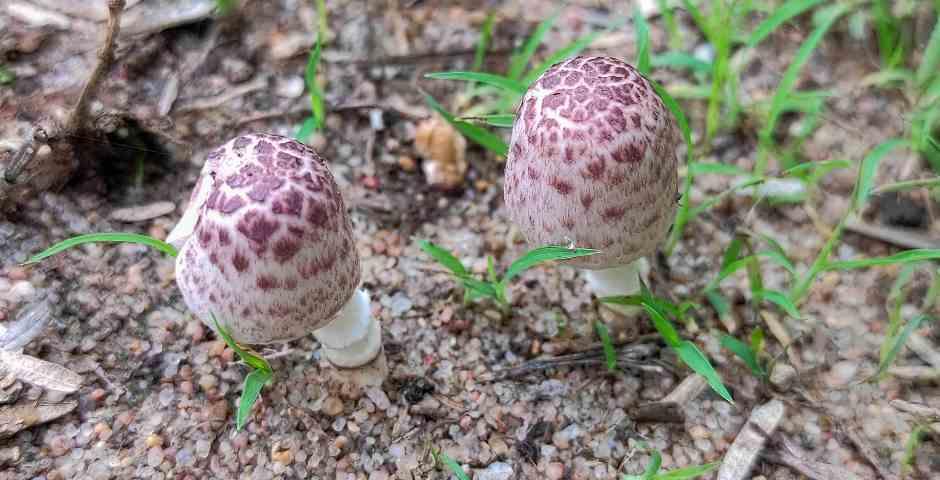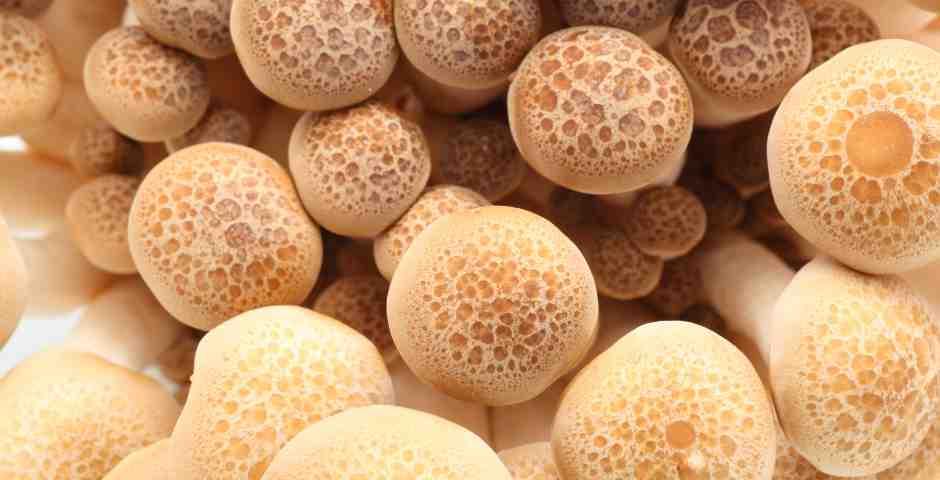Poisonous bathroom mushroom identification

How to Identify Mushrooms Growing in the Bathroom?
Mushrooms are fascinating organisms that often emerge in unexpected places, such as bathrooms, which are typically damp and humid environments.
If you’ve noticed mushrooms sprouting in your bathroom, it’s important to identify them properly, as some can be harmful or poisonous.
Understanding the growth patterns, characteristics, and environmental conditions that foster the growth of mushrooms will help you safely identify and deal with them.
This article will guide you through the process of identifying mushrooms growing in the bathroom and provide tips for dealing with them.
Why Do Mushrooms Grow in Bathrooms?
Mushrooms thrive in moist, dark environments, which makes bathrooms an ideal breeding ground. Bathrooms are often warm, have poor ventilation, and contain moisture from showers, baths, and sinks, creating the perfect conditions for mushrooms to grow.
The presence of organic material such as mold, soap scum, and even the decaying matter of other household items can provide the nutrients mushrooms need to flourish.
Mushrooms in bathrooms may appear suddenly, but their spores likely began growing long before they became visible. The spores travel through the air and settle in areas with favorable conditions.
The warm, humid environment of the bathroom allows these spores to sprout into the mushrooms we see.
Identifying Mushrooms in the Bathroom
When identifying mushrooms growing in your bathroom, there are a few key characteristics to look for. While there are thousands of species of mushrooms, not all of them are dangerous.
Some may be benign, while others may be toxic. Here’s a step-by-step guide to identifying mushrooms:

1. Size and Shape
Mushrooms can vary greatly in size, shape, and color. Typically, mushrooms found in bathrooms are small to medium-sized, but some species can grow larger. The shape of the mushroom is an important feature to note:
- Cap: Most mushrooms have a cap that resembles an umbrella. The size, shape, and texture of the cap can be used to identify different types of mushrooms.
- Stem: Mushrooms have stems that support the cap. The stem can be smooth or fibrous and may vary in height, thickness, and color.
- Gills: Underneath the cap, mushrooms often have gills, which may be visible when the cap is lifted. The color and spacing of the gills can be important in identifying the species.
2. Color
Mushrooms come in a range of colors, from white to brown to brightly colored varieties. The color of the cap, stem, and gills can be a key indicator of the type of mushroom. Common mushrooms found in bathrooms are typically light in color, such as white, cream, or light brown.
However, it’s important to note that some poisonous mushrooms, such as the Amanita species, can also be white, so color alone is not enough for identification.
3. Odor
The smell of a mushroom can also provide clues about its identity. Some mushrooms have a pleasant odor, while others emit a foul or unpleasant smell.
Toxic mushrooms like the Amanita phalloides (Death Cap) can sometimes emit a foul, radish-like odor, while edible varieties like the common button mushroom may have a mild, earthy scent.
Always be cautious about smelling mushrooms, as some toxic varieties can cause severe reactions if inhaled.
4. Spore Print
A spore print can provide valuable information for identifying mushrooms. To make a spore print, place the mushroom cap, gills facing down, on a piece of white or black paper.
After several hours or overnight, the spores will fall from the gills and leave a print on the paper.
The color of the spore print—whether white, brown, purple, or black—can help narrow down the mushroom's species. A spore print is one of the most reliable methods of identifying mushrooms.

5. Location and Growth Pattern
The location where the mushrooms are growing can provide insight into their species. In bathrooms, mushrooms are likely to grow in areas that are consistently damp, such as near sinks, showers, or under leaking pipes.
The growth pattern can also be a helpful clue: mushrooms often grow in clusters or in a circle, known as a "fairy ring," or in solitary patches.
Understanding where and how the mushrooms grow can guide your identification process.
6. Toxicity
One of the most important aspects of identifying mushrooms is determining whether they are toxic or safe to handle.
While many mushrooms are harmless, some species are extremely toxic and can cause severe illness or even death if ingested. Some of the most dangerous mushrooms include:
- Amanita phalloides (Death Cap): This mushroom is highly toxic and often mistaken for edible varieties. It can cause liver and kidney failure and is responsible for many mushroom poisoning deaths worldwide.
- Amanita muscaria (Fly Agaric): Known for its distinctive red cap with white spots, this mushroom is toxic and can cause hallucinations and other harmful effects.
- Galerina species: These mushrooms resemble edible varieties like the honey mushroom, but they contain deadly toxins.
If you are uncertain about the safety of a mushroom, it is always best to avoid touching or consuming it. It is advisable to contact a local expert or mushroom identification group for assistance.

Steps to Take if You Find Mushrooms in Your Bathroom
If you find mushrooms growing in your bathroom, it is important to handle the situation with care, especially if you suspect that the mushrooms might be toxic. Here’s what you should do:
1. Do Not Touch or Consume the Mushrooms
Even if the mushrooms appear harmless, it’s best to avoid touching them without gloves, as some mushrooms can cause skin irritation. Do not consume any mushrooms unless you are absolutely certain of their identity and safety.
2. Clean the Area Thoroughly
Mushrooms thrive in moist environments, so it’s crucial to address the underlying moisture problem in your bathroom. Identify and fix any leaks or sources of excess moisture. Clean the affected area with a mixture of bleach and water or a mold-killing solution to prevent further growth.
3. Remove the Mushrooms Carefully
Use gloves or a plastic bag to remove the mushrooms from the bathroom. Avoid handling them directly with your bare hands. Place the mushrooms in a sealed bag to prevent the spores from spreading. Discard the mushrooms in a safe manner, such as in a trash bag that can be tightly sealed.
4. Address Moisture Issues
Mushrooms thrive in damp environments, so it’s important to address any moisture problems in your bathroom. Consider installing a dehumidifier or improving ventilation by using an exhaust fan or opening windows to reduce humidity levels.
5. Consult an Expert
If you are unsure about the identity of the mushrooms or if you suspect they may be toxic, it’s important to consult a mushroom expert or mycologist. There are many online forums and local mushroom clubs where you can get assistance with identification. Alternatively, you can contact your local poison control center for advice.
Preventing Future Mushroom Growth
To prevent mushrooms from growing in your bathroom in the future, make sure to keep the area dry and well-ventilated.
Fix any leaks, use a dehumidifier, and clean the bathroom regularly to remove organic matter that could serve as food for fungi. Regularly check for signs of moisture buildup and address any problems before they lead to mushroom growth.
Conclusion
Mushrooms growing in the bathroom are not an uncommon occurrence, but they can be concerning if not properly identified and dealt with.
By paying attention to key characteristics such as size, shape, color, odor, and spore print, you can identify the mushrooms and determine if they pose a danger. Whether they are harmless or toxic, understanding how to handle mushrooms growing in your bathroom is crucial for maintaining a safe and healthy environment.
Always prioritize caution and seek professional guidance when necessary.
You can write about any topic on ATReads! Whether it’s mushroom identification, home improvement, or any other subject you’re passionate about, ATReads offers a platform to share your knowledge and ideas with like-minded individuals.

- Book Reviews & Literary Discussions
- Writing
- Reading List
- Arts and Entertainment
- Personal Development
- Storytelling
- Startup
- Books
- Biography
- Dance
- Drinks
- Entertainment & Pop Culture
- Health & Fitness
- Education & Learning
- Food & Cooking
- Παιχνίδια
- Gardening
- Self-Care & Mental Health
- Home Decor & DIY
- Literature
- Music
- Networking
- άλλο
- Party
- Philosophy and Religion
- Τόπος
- Shopping
- Relationships & Dating
- Sports
- Theater
- lifestyles & hobbies/shutterbugs
- Lifelong Learning
- Tutorial
- Announcement
- Inspirational Stories & Motivation


